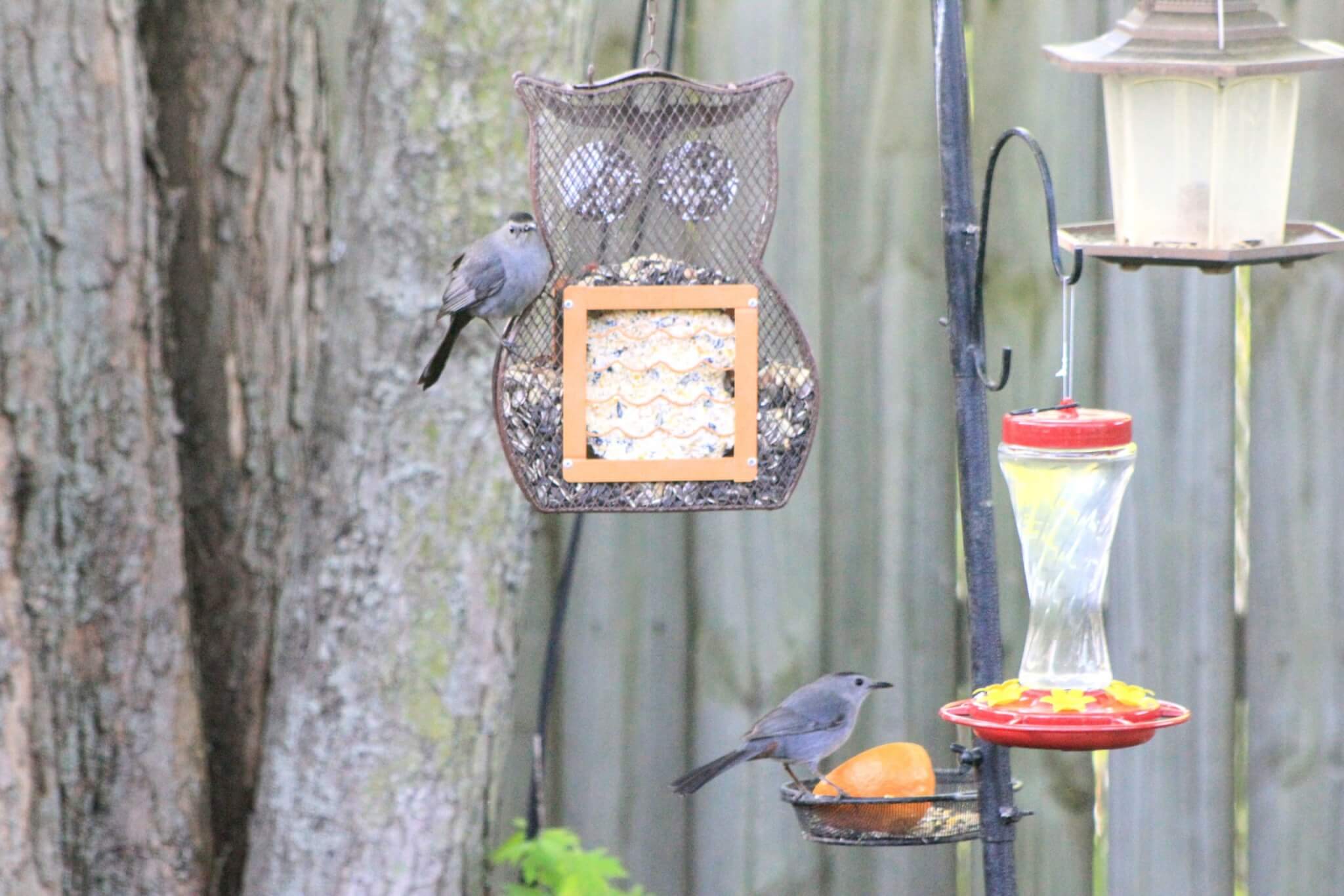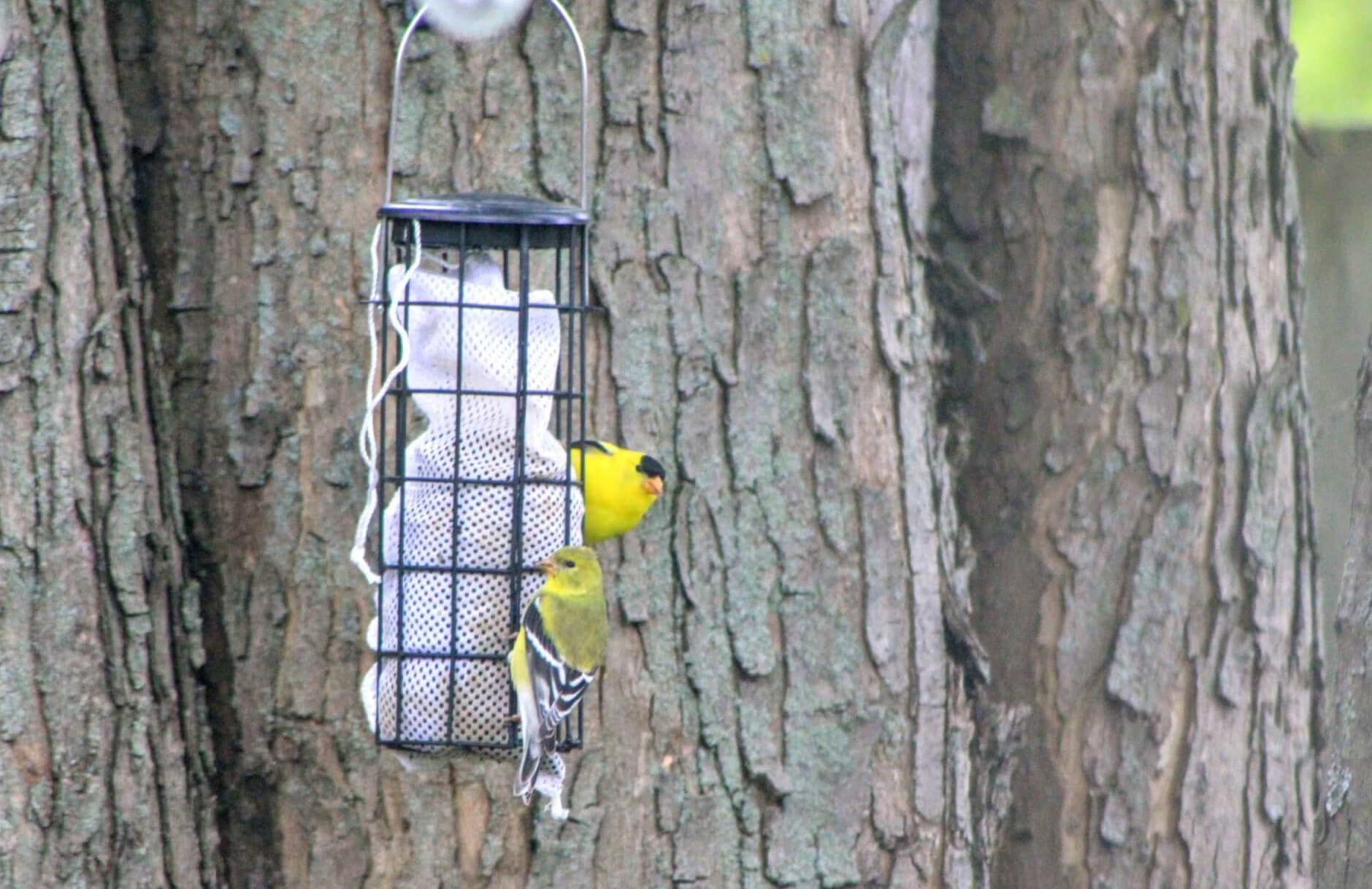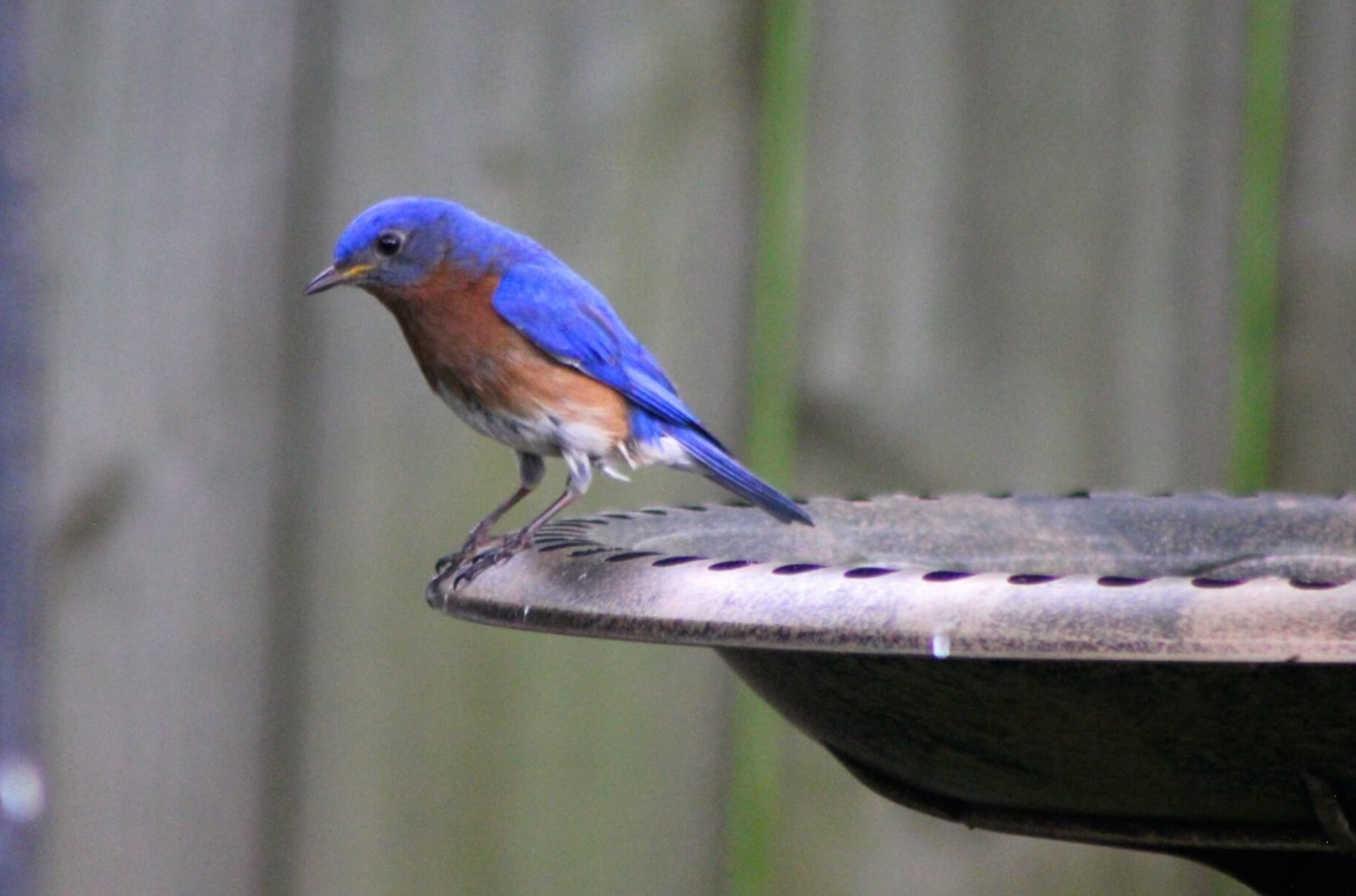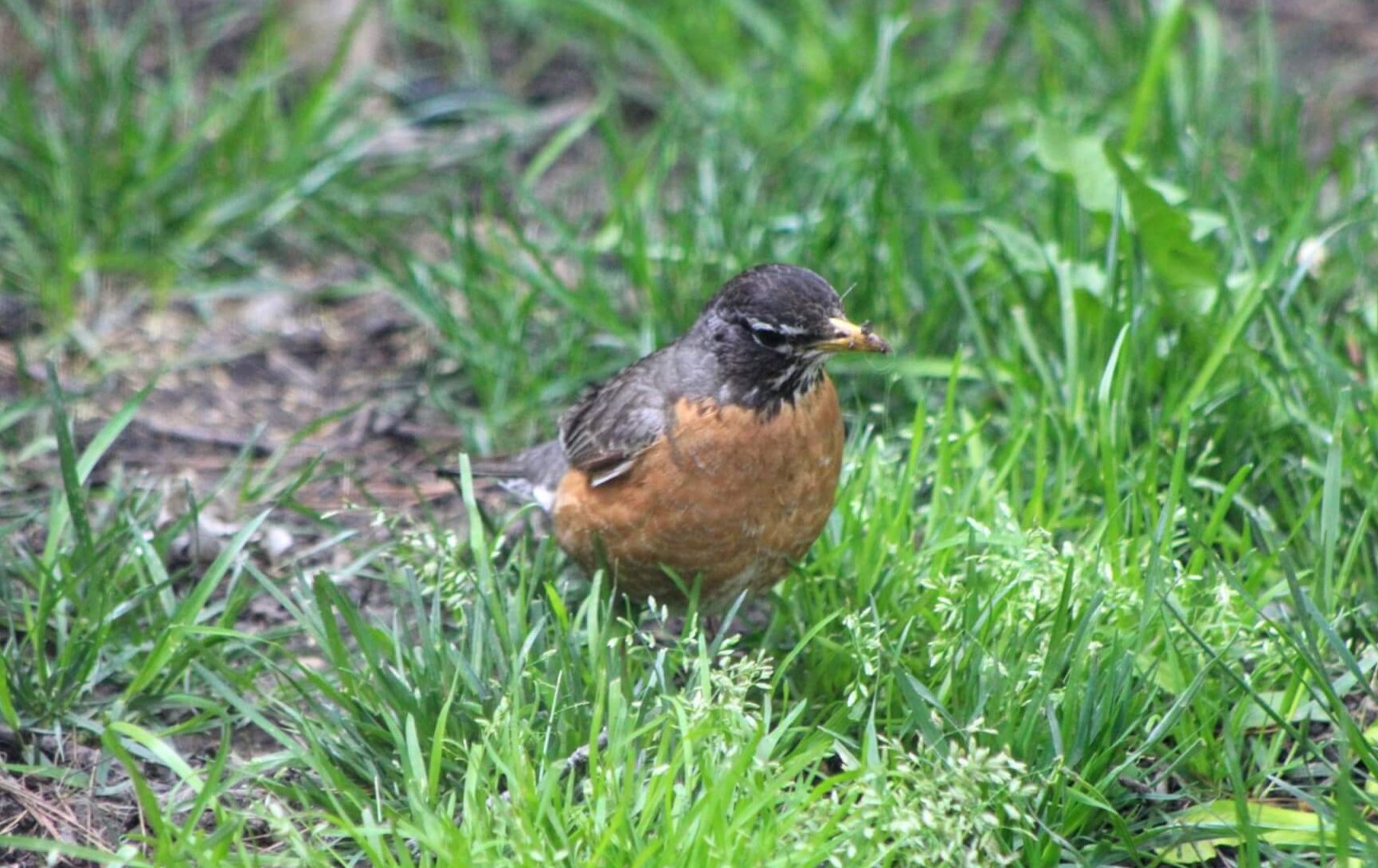Backyard birding, Tips to attract birds to your nest
 Outcalt holding a Hermit Thrush, which can migrate through Indiana.
Outcalt holding a Hermit Thrush, which can migrate through Indiana. "Being trapped inside during the coronavirus pandemic has been hard on my mental health, as I’m sure it has been for many of us,” shared Jessica Outcalt. “Defending my dissertation three days before the world began shutting down, finishing my degree in the middle of a global pandemic and graduating with my Ph.D. via a virtual ceremony I watched while birds sang in my backyard was a wild experience.
“Watching the birds outside my window, however, has provided an amazing escape from the harsh reality of all that's going on in the world. Rather than traveling to exotic habitats and chasing rare birds, I’ve learned to appreciate common, local birds and see behaviors I might have missed otherwise.”
Outcalt now looks forward to applying years of research in Purdue’s Department of Forestry and Natural Resources to help others protect, understand and appreciate birds, even in their own backyards.
 Red-bellied Woodpecker in Outcalt's yard - "The name “Red-headed” Woodpecker was taken by another species, even though this one only has a pale red wash on the belly."
Red-bellied Woodpecker in Outcalt's yard - "The name “Red-headed” Woodpecker was taken by another species, even though this one only has a pale red wash on the belly." How have you made your own home inviting to birds?
I live in the suburbs and have a fairly small yard, but we still attract a lot of songbirds. I have two maple trees which bring in a surprising amount of forest birds.
My strategy is to put out a variety of feeders and see what they attract. Even if they aren’t necessarily coming for my feeders, birds are social. If they hear other birds, they may perch in nearby trees.

Gray Catbirds - "They breed in this area, but I saw them most commonly during migration. They love suet and oranges."
Do bird feeders need to be kept full all year?
I feed our birds fairly consistently throughout the year, but I relax during the summer since it is their breeding season. A large majority of birds will switch to being exclusively insectivores in June and July because they are feeding babies, which need a lot of protein. Traffic at feeders drops considerably. If I were to continue to feed them in those months, it would attract starlings and House Sparrows, which are invasive species.
 White-breasted Nuthatch - "These are suet eaters that often feed upside-down and have a black cap."
White-breasted Nuthatch - "These are suet eaters that often feed upside-down and have a black cap." What foods would you recommend filling bird feeders with?
When I can afford it, I buy sunflower seeds rather than a mix with things like millet added in. The extras tend to attract squirrels and chipmunks. Most birds like sunflower seeds, especially cardinals, woodpeckers, finches and tufted titmice.
Orioles love oranges but enjoy other fruits and even grape jelly. You’ll want to change fruits out regularly so they don’t get moldy.
American Goldfinches love thistle. They are constantly on my feeder scarfing it down. It’s also a good way to attract chickadees, woodpeckers and nuthatches. A simple thistle sock can give you great results.
For hummingbirds, don’t forget that red dye is toxic. The best solution to feed them is four parts hot water and one part sugar. Make sure to clean your hummingbird feeders so ants and mold don’t overtake them.
There is a suite of species that loves eating seeds off the ground, including Song Sparrows, Dark-eyed Juncos and robins. Unfortunately, it may also attract some non-bird friends to your yard, like moles.
 American Goldfinches - "This is a male and female pair, enjoying thistle seed from a thistle sock feeder."
American Goldfinches - "This is a male and female pair, enjoying thistle seed from a thistle sock feeder." Do birdhouses and birdbaths make a difference?
Birdhouses are a great resource, but you need to monitor them. If you live in the suburbs like me, invasive House Sparrows may take them over.
Bluebird populations have declined significantly over the last few decades, so nest boxes provide a home they may not be able to find otherwise.
Birdbaths are helpful too, as long as you keep them clean and don’t let algae grow. Providing a water source can bring in birds that might not eat seeds. It doesn’t need to be anything fancy. The birdbath I use only cost $20, but you could even put out a bowl of water. I keep mine full over the summer, even if I’m not filling the feeders. Robins and fledgling birds love taking baths.
 An Eastern Bluebird enjoying the birdbath in Outcalt's yard.
An Eastern Bluebird enjoying the birdbath in Outcalt's yard. How do I manage my landscaping and insects while keeping birds in mind?
I always recommend planting something native to your area. The National Audubon Society has a great resource for choosing native plants. Several studies have shown insects are more likely to be present on native plants. Local trees, shrubs and flowers can provide seeds and homes for birds. Non-native plants like honeysuckle can overtake your yard and provide almost no nutritional benefit for birds. Even though honeysuckle berries look pretty, it’s like feeding cake to a toddler.
I try to avoid using pesticides and bug killers. Insects are an important food source for birds. I like growing vegetables, so I use natural bug deterrents, like garlic spray. It doesn’t kill the friendly pollinators or damage the birds that would eat them.
The fact that I’m not great about mowing my yard works out well for the birds. There are a lot of species that eat the clover and grass seeds that grow naturally. It also attracts bees and butterflies.
 American Robins are often seen on the ground, finding earthworms for nestlings.
American Robins are often seen on the ground, finding earthworms for nestlings. Once the birds arrive, how can you protect them?
Window collisions are a concern for birds, so you’ll either want to put your feeder right next to your window or at least 30 feet away, if possible. If the feeders are close enough, birds won’t build up enough speed to hurt themselves if they hit a window.
It is best when feeders are placed around eight feet away from trees or shrubs. That way, birds can see what is going on and feel safer coming to feeders. Predators like cats can hide in denser vegetation, so open areas at an intermediate distance from shelter are ideal. Domestic cats are one of the largest sources of mortality for birds, so keeping cats inside is important, especially when there are fledgling birds around.
You can even help out by drinking bird-friendly coffee. Many migratory birds winter in South America where rainforests are cut down to grow coffee on sun plantations. Bird-friendly coffee is grown in the shade, leaving the forest canopy intact.
Migratory birds travel across continents, often relying on our backyards for fuel and resting spots. Birds connect us as neighbors in times like these, despite any lines we might draw.





